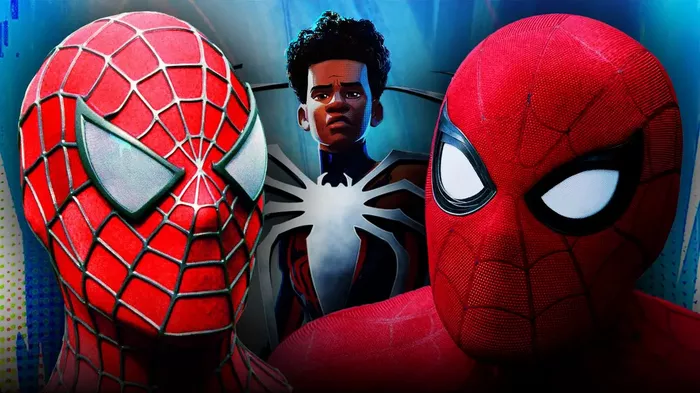The Spider-Man franchise has long been a cornerstone of modern pop culture, captivating audiences with its thrilling action sequences, compelling character arcs, and timeless themes of power and responsibility. With the web-slinging hero’s enduring popularity spanning decades, navigating the diverse array of Spider-Man movies can be a daunting task for both longtime fans and newcomers alike. Whether you’re eager to experience the iconic moments of Sam Raimi’s original trilogy, explore the intricacies of the reboot, or delve into the immersive storytelling of the Marvel Cinematic Universe (MCU), understanding the chronological and release order of the Spider-Man movies is essential to fully appreciate the evolution of this beloved superhero’s cinematic journey.
1. The Classic Beginnings: Sam Raimi’s Trilogy (2002-2007)
For many fans, Sam Raimi’s trilogy serves as the quintessential introduction to the world of live-action Spider-Man movies. Kicking off with “Spider-Man” in 2002, the franchise’s first installment traces the origins of Peter Parker’s transformation into the masked superhero, emphasizing the emotional struggles and moral dilemmas that come with wielding extraordinary powers. The subsequent sequels, “Spider-Man 2” (2004) and “Spider-Man 3” (2007), further delve into Peter’s complex relationships, inner turmoil, and the challenges posed by formidable adversaries, solidifying the trilogy’s place in cinematic history and its significant impact on the superhero genre.
2. The Revamped Journey: The Reboot (2012-2014)
Following the conclusion of Raimi’s trilogy, the Spider-Man franchise underwent a dramatic reboot, offering audiences a fresh perspective on the beloved character’s origins and adventures. “The Amazing Spider-Man” (2012) serves as the starting point for this reimagined narrative, introducing a new cast and exploring Peter Parker’s journey of self-discovery and his ongoing battle against powerful adversaries. The subsequent sequel, “The Amazing Spider-Man 2” (2014), further delves into Peter’s complexities, forging a deeper connection between the protagonist and his adversaries while laying the groundwork for a renewed exploration of Spider-Man’s universe.
3. Enter the Marvel Cinematic Universe: The MCU Trilogy (2016-2021)
Marvel’s inclusion of Spider-Man in its sprawling cinematic universe marked a pivotal moment in the character’s cinematic journey, seamlessly integrating the web-slinger into the interconnected world of superheroes and larger-than-life battles. “Captain America: Civil War” (2016) serves as the precursor to the MCU’s Spider-Man trilogy, introducing Tom Holland as the new face of the beloved hero and setting the stage for his subsequent standalone adventures. The trilogy’s first installment, “Spider-Man: Homecoming” (2017), propels Peter Parker into a world of high-stakes heroism and mentorship under the watchful eye of Iron Man. The subsequent films, “Spider-Man: Far From Home” (2019) and “Spider-Man: No Way Home” (2021), further unravel Peter’s personal and heroic journey, weaving a complex narrative that intertwines the challenges of adolescence with the weight of superhero responsibilities.
4. Understanding the Chronological Order: From Origin Story to Multiverse Exploits
Understanding the chronological order of the Spider-Man movies provides a comprehensive view of the character’s evolution and the overarching narrative arcs that unfold across different cinematic iterations. The chronological journey begins with the origin story depicted in the 2002 “Spider-Man” and extends to the subsequent installments in the Raimi trilogy, the reboot, and the MCU trilogy. This sequential progression offers viewers a deeper appreciation of Peter Parker’s growth as a character, his evolving relationships, and the challenges that shape his transformation into the iconic hero known and loved by millions around the world.
5. Decoding the Release Order: Experiencing the Evolution of Spider-Man On Screen
Alternatively, experiencing the Spider-Man movies in order of their release provides a unique perspective on the cinematic evolution of the franchise, allowing viewers to witness the advancements in storytelling techniques, visual effects, and character development across different eras. Beginning with Sam Raimi’s groundbreaking “Spider-Man” in 2002 and culminating with the multiverse-shattering “Spider-Man: No Way Home” in 2021, following the release order provides an immersive journey through the highs and lows of Peter Parker’s life, his triumphs, and his struggles, while highlighting the cultural impact and enduring legacy of the Spider-Man franchise.
6.Unraveling the Web: A Multifaceted Cinematic Experience
Navigating the rich tapestry of Spider-Man movies offers audiences a multifaceted cinematic experience, showcasing the character’s enduring appeal and his ability to resonate with audiences across generations. Whether following the chronological order to grasp the intricacies of Peter Parker’s character development or embracing the release order to appreciate the evolution of the franchise’s storytelling techniques, the Spider-Man movies provide a compelling narrative tapestry that weaves together themes of heroism, sacrifice, and the enduring struggle between personal identity and superhero responsibilities. As the Spider-Man saga continues to expand and evolve, the web-slinger’s cinematic journey remains a testament to the enduring power of storytelling and the timeless allure of one of Marvel’s most beloved and iconic superheroes.

